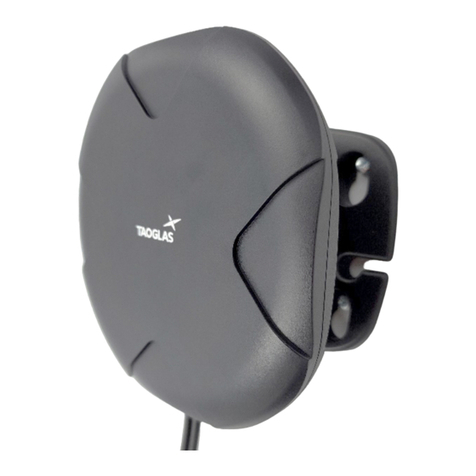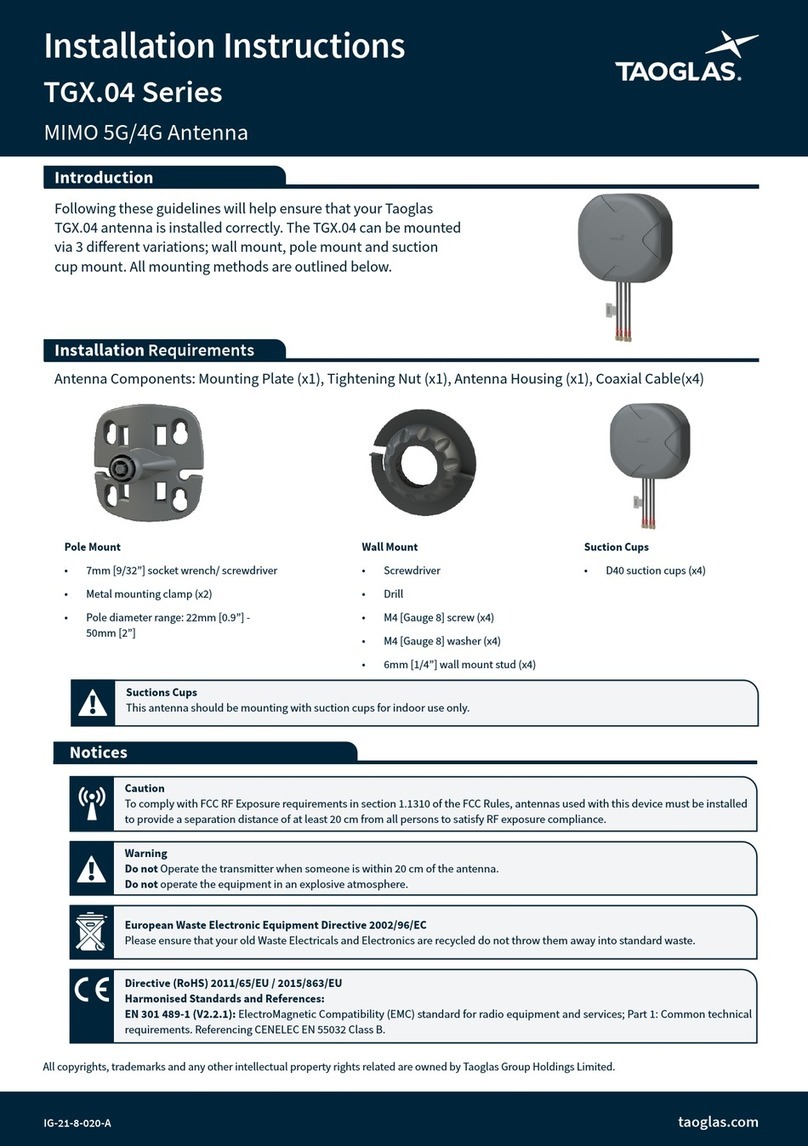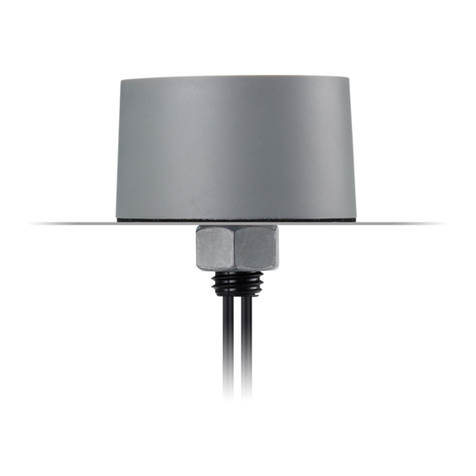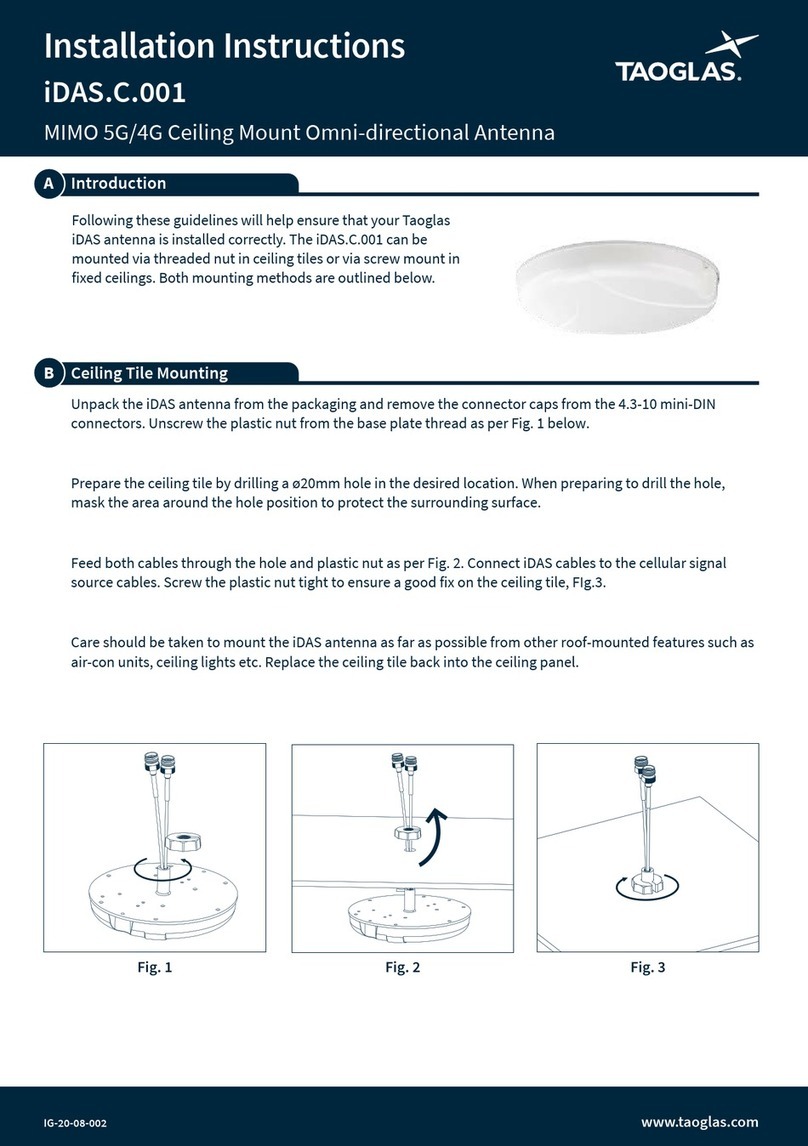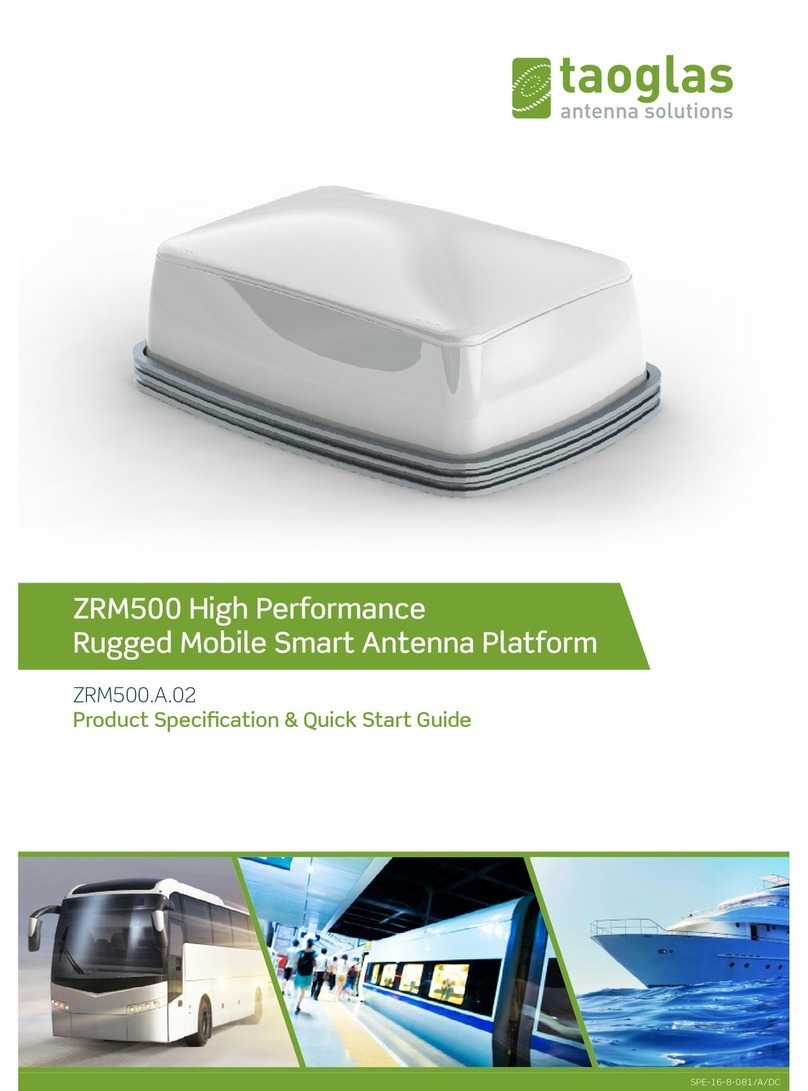This specification covers the Dielectric PIFA Antenna for 2400-2484MHz, covering such applications as Wi-Fi,
Bluetooth and Zigbee. A ceramic dielectric
PIFA antenna offers smallest footprint, superior gain characteristics and improved isolation over traditional PCB
based antennas. This antenna has been developed for the top right hand corner edge of the component side of
the Board (bottom left corner edge), the antenna has to be positioned on a non-ground (copper/metal free) area
with the feed-point matched direct to the module. Please refer to Recommended Foot print Diagram (8.0 Page
14).
Many module manufacturers specify peak gain limits for any antennas that are to be connected to that module.
Those peak gain limits are based on free-space conditions. In practice, the peak gain of an antenna tested in free-
space can degrade by at least 1 or 2dBi when put inside a device. So ideally you should go for a slightly higher
peak gain antenna than mentioned on the module specification to compensate for this effect, giving you better
performance.
Upon testing of any of our antennas with your device and a selection of appropriate layout, integration technique,
or cable, Taoglas can make sure any of our antennas’ peak gain will be below the peak gain limits. Taoglas can
then issue a specification and/or report for the selected antenna in your device that will clearly show it complying
with the peak gain limits, so you can be assured you are meeting regulatory requirements for that module.
For example, a module manufacturer may state that the antenna must have less than 2dBi peak gain, but you
don’t need to select an embedded antenna that has a peak gain of less than 2dBi in free-space. This will give you a
less optimized solution. It is better to go for a slightly higher free-space peak gain of 3dBi or more if available.
Once that antenna gets integrated into your device, performance will degrade below this 2dBi peak gain due to
the effects of GND plane, surrounding components, and device housing. If you want to be absolutely sure, contact
Taoglas and we will test. Choosing a Taoglas antenna with a higher peak gain than what is specified by the module
manufacturer and enlisting our help will ensure you are getting the best performance possible without exceeding
the peak gain limits.












